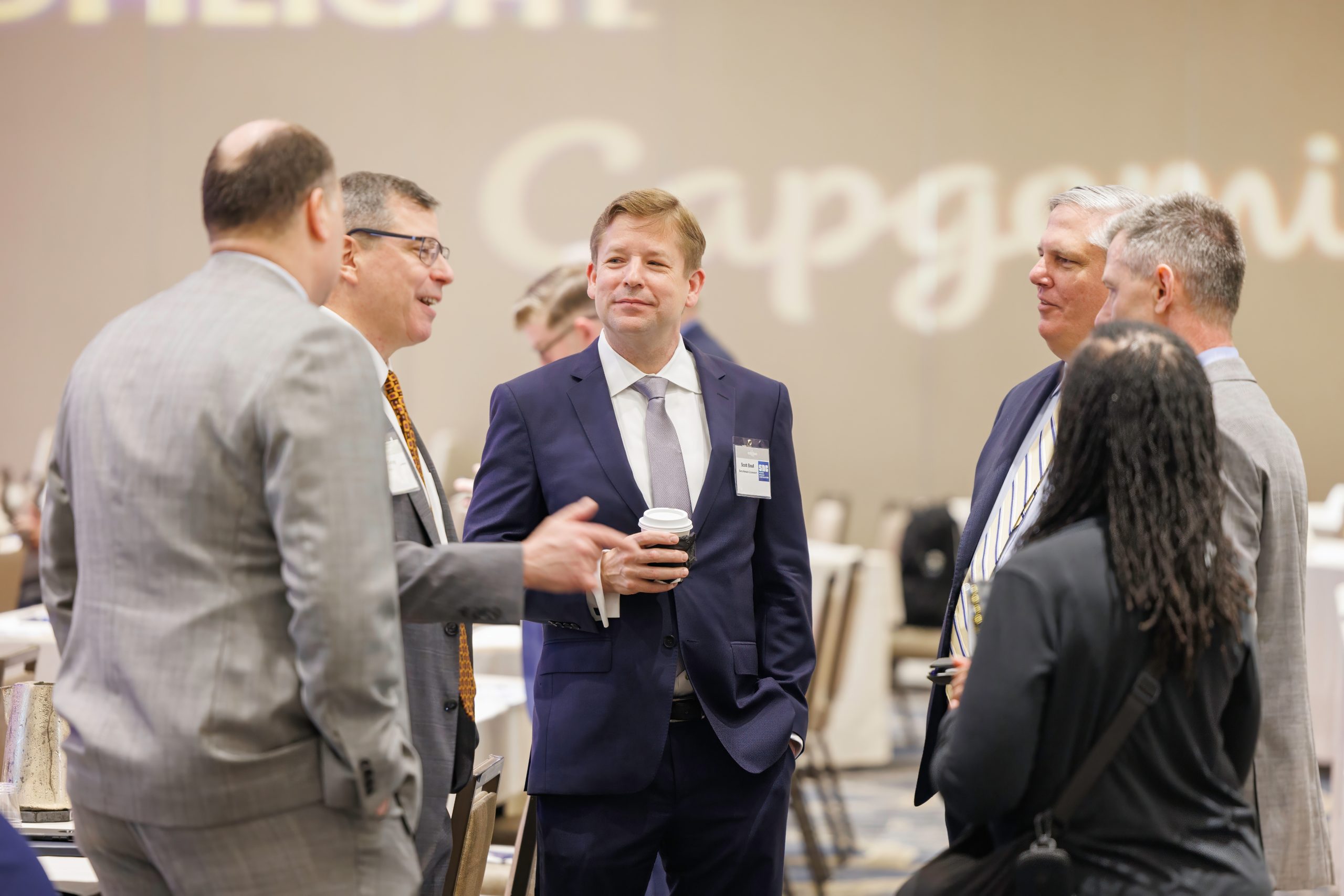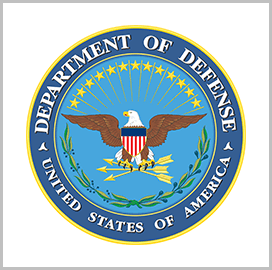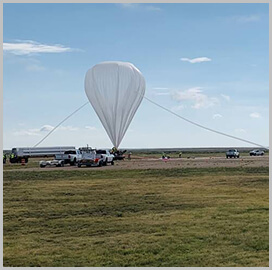
Breaking Down the 2024 Army Summit
Just a day before the Army’s 249th birthday, on June 13, the Potomac Officers Club brought together the service’s top decision-makers, acquisition professionals and strategists for a day of fascinating talks, Q&As, networking sessions and idea formation. The 2024 Army Summit, held at the Hilton McLean in Virginia, was a fantastic day to be a government contractor in the Army business.
Below you’ll find highlights worth remembering from the event’s sessions.
To browse a list of upcoming POC-hosted events, click here. Be sure to save your spot now for the next service branch-focused networking opportunity: the 2024 Air Defense Summit. Held on July 23 at the Hilton McLean, the event will reveal exclusive insights about the future plans of the U.S. Air Force and feature top leaders like DAF Chief Information Officer Venice Gooodwine and Under Secretary of the Air Force Melissa Dalton.

Opening keynote: Young Bang, Principal Deputy Assistant Secretary of the Army for Acquisition, Logistics & Technology
Primary takeaways:
- Digital modernization efforts have inspired a shift to agile acquisition at speed, production at scale
- Production at scale important because if things can’t be fielded fast enough, “we are doing a disservice to our soldiers”
- Hybrid acquisition model Army is employing includes:
-
- Change in how capability needs are written
- Flexible acquisition + contracting strategies
- Streamlining, modernizing key processes
- New sustainment model
- Developing needed talent + expertise
- Hybrid warfare principles:
- Extended fires range
- Low signature + on the move
- Interior lines
- Cyber + EW capabilities
- Sensing
- Conflict in Ukraine has shown that traditional warfare still matters
- Have to look at things from both kinetic + non-kinetic perspectives
- Need more kinetic + non kinetic capabilities for counter-UAS tech

Morning keynote fireside chat: Jennifer Swanson, Deputy Assistant Secretary for Data, Engineering & Software for ASA(ALT), moderated by Dan Ford (Capgemini)
Primary takeaways:
- Directive to update software development + acquisition approaches was issued in March 2024
- Previous method for contracting + testing was “waterfall” style and ineffective, which inspired directive
- EVSC request for proposals (released right when she and Bang came aboard) tested not only the agility of products but of companies
- Not going to get the right product if don’t have right people
- Project Linchpin will allow us to create bespoke AI algorithms & leverage third party algorithms
- There are significant big gap areas in AI in industry and beyond, not just in military or government
- Coming in September: Modern Software Framework
- Enables program officers + program managers “to develop their architectures to enable openness.”
- Lays out:
- How to develop product’s reference architecture
- How to develop an implementation to ‘kick the tires’
- How to identify the set of open APIs leveraged + used for software & data interoperability

Keynote: Mike Monteleone, Director, of the Assured Positioning, Navigation and Timing/Space Cross Functional Team at Army Futures Command
Primary takeaways:
- Conflict going to remain unpredictable — “close combat will continue to decide battles”
- Control of land also remains key
- 6 main areas of AFC: Future operational environment, research, concepts, experimentation, requirements and integration.
- AFC has focus on evaluating tech in different operational threat environments. Helps iterate & optimize product
- “We have to recruit and train a workforce capable of handling the aspects of what will be the future data center Army”
- 5 challenges of AFC:
- Employ formulation-based approach to lethality & survivability
- Increase lethality + survivability of light formations
- Decrease weight + sustainment tails of heavy formations
- Integrate humans + machines
- Field data-centric C2 system for decision dominance

Panel: “Joint and Combined Integrated Air and Missile Defense in the Face of Evolving Threat Environments”
Participants: Col. Anthony Behrens (Guam Defense System), Col. Glenn Henke (Joint Counter-Small UAS Office), Dr. Tom Karako (Center for Strategic and International Studies) and moderator Larry Barisciano (Leidos)
Primary takeaways:
- Panel focus = UAS, Hypersonics, cruise missiles and other air and space threats are growing at epic pace putting the Joint Force and our Allies at risk
- Panelists addressed:
- Modernizing IAMD capabilities with new programs + open systems approach
- How to keep pace with evolving threats
- What Army is doing across investments and partnerships with industry, Joint Forces, Allied nations
- Embracing new approaches to deliver capabilities + capacity needed to protect Joint Force, our critical assets around the world

Panel: “Software Development Driving Advancement for Army Missions”
Participants: Col. Vito Errico (U.S. Army Software Factory), Cpt. Grayson Gordon (U.S. Army Cyber Command), Maj. Michael Krogh (Army Intelligence and Security Command) and moderator Kevin Long (Highlight Technologies)
Primary takeaways:
- Gordon: Evolving requirements necessitate agile approach
- Krogh: “Developers end up being one of the greatest connective tissues between the various joint forces headquarters, [the Cyber National Mission Force] and anyone doing cyber operations”
- Krogh: Used to just test software for one express purpose/one mission. Now, need to make sure it’s “correct, reliable and repeatable”
- Errico: Army Futures Command = most significant reorganization in service since Vietnam
- AFC learned from tech industry in Austin to empower its workforce at its lowest levels so good ideas rise to top
- Army Software Factory has implemented this approach
- Krogh: Army Intel and Security Command has used genAI as ‘rubber duck’ that you can ask questions + do the opposite of what it tells you
- Gordon: Army could improve its software ops if those with the technical talent & contextual understanding of problems would “just go build it”
- Has never seen someone in this situation who was capable not turn in something “fantastic”

Panel: “How Do We Accelerate Speed of Development to Speed of Decision?”
Participants: Clif Basnight (Ultra Intelligence & Communications), Dr. Don Reago (Army Research & Technology Integration Directorate), Mark Kitz (Army PEO for Command, Control, Communications-Tactical), Nicholaus Saacks (Army PEO for Intelligence, Electronic Warfare, and Sensors) and moderator Bob Ritchie (SAIC)
Primary takeaways:
- Saacks: Should there be a requirement for PMs to include DevSecOps in processes? There isn’t a program that doesn’t use it in PEOs
- Kitz: There are parallels between digital engineering + AI infrastructure
- Basnight: Ultra is doing DevSecOps in most cost effective way I’ve seen in past 20 years
- Reago: Full language of how to vet AI systems has not been fully developed
- Kitz: Digital engineering = “happy medium”
- Could reduce prototyping costs & evaluation timelines
- Critical to defining future of Army command posts
- Reago: DE helps reduce risks of limited budgets, tight timelines for S&T programs
- Sometimes these parameters produce not fully realized prototypes
- Basnight & Kitz: DE could apply to the XM30 Mechanized Infantry Combat Vehicle initiative
- Basnight: Be cautious about bringing wrong amount of DE into information domain

Panel: “Harnessing Technology for Force Readiness in Multi-domain Environments”
Participants: Rodney Davis (Army PEO for Aviation), Col. Bettye Dufour (Army National Guard), Dr. Andrew Midzak (Defense Health Agency) and moderator Lisa Mitnick (Capgemini)
Primary takeaways:
- Davis: As sensor-to-shooter times have decreased, Army’s ability to digitally mask its activities has been weakened
- Davis: Historically, technicians wary to add new things to cockpits of planes b/c of risk factor
- Rerouting = something that autonomous tech could help with; figuring out a new route when a threat appears in flight
- Other predictive logistics = good use of AI
- Midzak: AI + LLMs good for training education—“distilling down doctrine training manuals”
- Dufour: Project Linchpin “supposed to enable artificial intelligence and machine learning through traceability, observability, replaceability and consumption”
- Dufour: Using data from war on terror to promote “whole wellbeing of soldier” / “whole of soldier” care
- Midzak: Goal is to get “ahead of the curve” of a soldier’s crisis event, identify behavioral red flags

Panel: “Accepting Risk in Leveraging AI at the Pace of Need”
Participants: Dr. Peter Beling (Virginia Tech National Security Institute), Dr. Sek Chai (Latent AI), Brandi Szczesny (Office of the Assistant Secretary of the Army for Acquisition, Logistics and Technology) and moderator Ray Ali (LMI)
Primary takeaways:
- Chai: Considerations for AI supply chain:
- How was the model trained?
- Is there risk of data poisoning?
- Szczesny: Army has tech challenge that will open to small businesses, academia, etc. very soon
- Szczesny: Multimodal AI = exciting future opportunity for AI. Models that can take in and generate multiple formats e.g. voice, imagery, text
- Beling: Quality of data dictates quality of what can be achieved with AI
- Data centers = #1 contribution to growth in energy demand
- By 2030, 9% of the world’s energy will be going to data centers for AI
- Beling: Embodied AI = potentially transformative
- Self driving vehicles
- Humanoid robots
- Chai: Don’t want to overhype capability
- Silicon Valley’s “fail fast” mentality—approach with caution
- Best application for AI = human augmentation, most mundane tasks

Panel: “Emerging Approaches to Digital Data and Artificial Intelligence in the Army: The Way Forward”
Participants: Ki Lee (Booz Allen Hamilton), Dan Andrew (Office of the Deputy Assistant Secretary of the Army for Data, Engineering and Software) and moderator Matt Beran (Appian)
Primary takeaways:
- Andrew: Most surprising finding of 100 day AI plan = AI was already pervasive in Army but misidentified, not fully understood
- Andrew: Army has been focused on hardware for decades, but there is resistance to change in acquisition processes
- Andrew: DevSecOps = digital engineering for software
- Lee: AI = “tip of the iceberg,” Army “is very intentional about focusing on all the fundamental building blocks underneath that water line”
- Lee: DE helps inform what modules we need to interoperate & interfaces required between technology
- Lee: Industry can help with taking open architecture principles into digital engineering
- Andrews: Industry can help cultural shift with people who have not been trained in technical tools

Closing keynote fireside chat: Leonel Garciga, Chief Information Officer of the U.S. Army, moderated by Josh Jackson (SAIC)
Primary takeaways:
- Army at a major transition point right now
- Laying down foundational work:
- Software delivery
- Acquiring, testing, training, etc.
- Focus on delivery
- Laying down foundational work:
- Top initiatives to accomplish in next 2 years:
- Tackling “resource understanding bureaucracy”
- Army is too late in the game to still have old school bureaucracy
- Approving pipelines for capabilities to be delivered seamlessly
- Not everybody will have a continuous ATO
- Leveraging all capabilities, rethinking approach
- Not everything needs to go to cloud
- Tackling “resource understanding bureaucracy”
- Garciga wants solidified way to improve & accredit DevSecOps pipelines, whether they’re GOGO, GOCO or COCO
- Focus on the basics — esp. improving data quality — before start thinking about AI
Category: Speaker News




